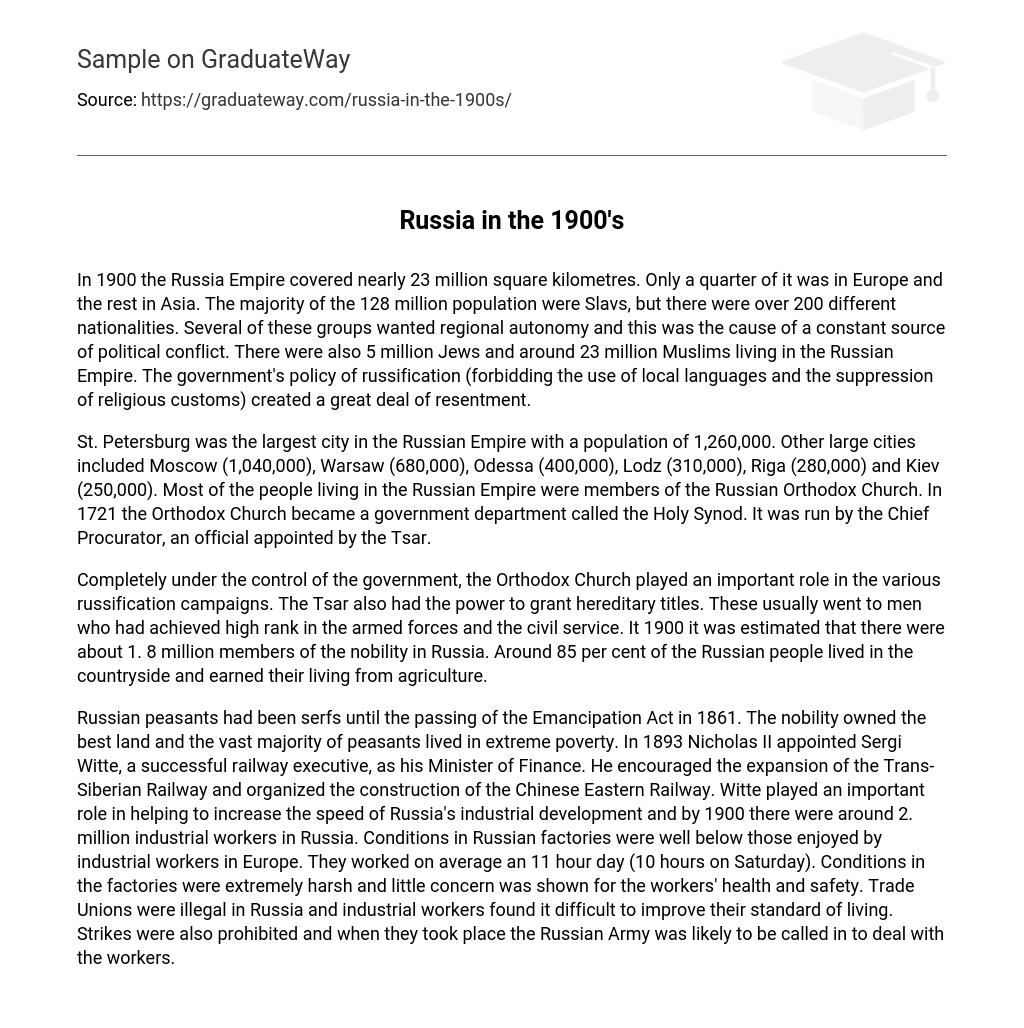In 1900 the Russia Empire covered nearly 23 million square kilometres. Only a quarter of it was in Europe and the rest in Asia. The majority of the 128 million population were Slavs, but there were over 200 different nationalities. Several of these groups wanted regional autonomy and this was the cause of a constant source of political conflict. There were also 5 million Jews and around 23 million Muslims living in the Russian Empire. The government’s policy of russification (forbidding the use of local languages and the suppression of religious customs) created a great deal of resentment.
St. Petersburg was the largest city in the Russian Empire with a population of 1,260,000. Other large cities included Moscow (1,040,000), Warsaw (680,000), Odessa (400,000), Lodz (310,000), Riga (280,000) and Kiev (250,000). Most of the people living in the Russian Empire were members of the Russian Orthodox Church. In 1721 the Orthodox Church became a government department called the Holy Synod. It was run by the Chief Procurator, an official appointed by the Tsar.
Completely under the control of the government, the Orthodox Church played an important role in the various russification campaigns. The Tsar also had the power to grant hereditary titles. These usually went to men who had achieved high rank in the armed forces and the civil service. It 1900 it was estimated that there were about 1. 8 million members of the nobility in Russia. Around 85 per cent of the Russian people lived in the countryside and earned their living from agriculture.
Russian peasants had been serfs until the passing of the Emancipation Act in 1861. The nobility owned the best land and the vast majority of peasants lived in extreme poverty. In 1893 Nicholas II appointed Sergi Witte, a successful railway executive, as his Minister of Finance. He encouraged the expansion of the Trans-Siberian Railway and organized the construction of the Chinese Eastern Railway. Witte played an important role in helping to increase the speed of Russia’s industrial development and by 1900 there were around 2. million industrial workers in Russia. Conditions in Russian factories were well below those enjoyed by industrial workers in Europe. They worked on average an 11 hour day (10 hours on Saturday). Conditions in the factories were extremely harsh and little concern was shown for the workers’ health and safety. Trade Unions were illegal in Russia and industrial workers found it difficult to improve their standard of living. Strikes were also prohibited and when they took place the Russian Army was likely to be called in to deal with the workers.





